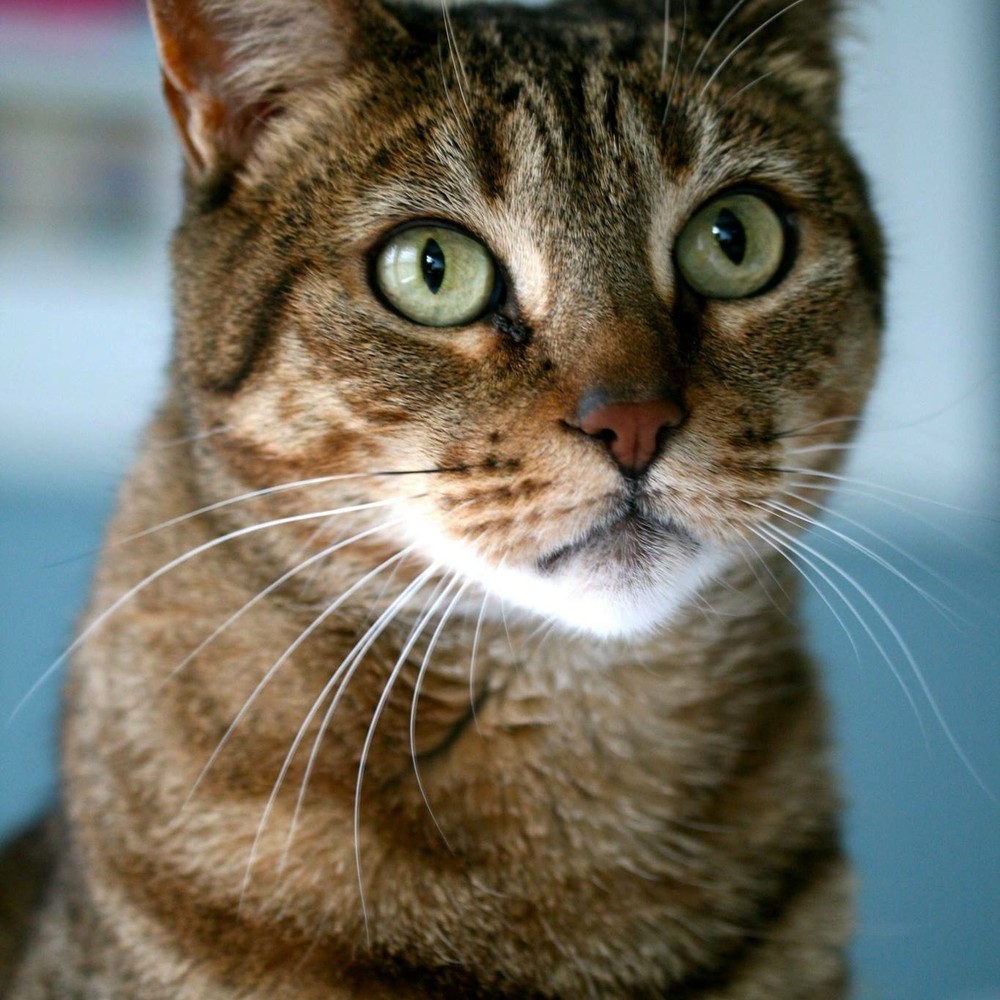Pixiebob cat
(Pixiebob)

Description
Pixiebob cats are a unique and fascinating breed of domesticated felines that are known for their bobbed tails, muscular physique, and wild appearance. They are a relatively new breed, having only been recognized by the International Cat Association (TICA) in 1998. In this article, we will provide an encyclopedia-style overview of the Pixiebob cat breed, covering their history, appearance, temperament, and care requirements. History: The Pixiebob cat breed is said to have originated in the Pacific Northwest region of the United States in the mid-1980s. According to legend, a barn cat that was known for its wild appearance and bobbed tail mated with a wild bobcat, producing a litter of kittens with similar characteristics. The breeder who owned the barn cat was intrigued by these kittens and began to selectively breed them, eventually creating the Pixiebob cat breed. Appearance: Pixiebob cats are medium to large-sized felines, with males typically weighing between 12-18 pounds and females weighing 8-12 pounds. They have a muscular and athletic build, with broad shoulders and a deep chest. Their coats are short to medium in length, and their fur can come in a variety of colors, including black, brown, gray, and red. One of the most distinguishing characteristics of the Pixiebob cat breed is their bobbed tails. The tail can range from a few inches to a few centimeters in length, and it can be straight, curved, or have a kink in it. In addition to their bobbed tails, Pixiebob cats have tufted ears, which give them a wild and exotic appearance. Temperament: Pixiebob cats are known for their friendly and outgoing personalities. They are affectionate with their owners and enjoy spending time with them, but they are also independent and can entertain themselves when left alone. They are intelligent cats that can be easily trained, and they are known to have a playful and curious nature. Pixiebob cats are also great with children and other pets. They have a calm and gentle demeanor, and they are not prone to aggression. They are social animals and thrive in households with other pets, especially if they are introduced to them at a young age. Care requirements: Pixiebob cats are relatively low maintenance when it comes to grooming. Their short to medium-length coats require minimal brushing, and they do not need to be bathed frequently. They do, however, require regular nail trimming, dental care, and ear cleaning to maintain their overall health. Pixiebob cats are active and playful cats that require daily exercise and mental stimulation. They enjoy playing with toys and climbing, so it is recommended that they have access to a cat tree or other climbing structure. They also enjoy interactive play with their owners, such as chasing a feather toy or playing fetch. Conclusion: Pixiebob cats are a unique and fascinating breed of domesticated felines that are known for their wild appearance and friendly personalities. They are great with children and other pets, and they require minimal grooming. If you are considering adding a Pixiebob cat to your family, be prepared to provide them with plenty of exercise, mental stimulation, and affection. With proper care and attention, a Pixiebob cat can be a wonderful companion for many years to come.
Taxonomic tree:







